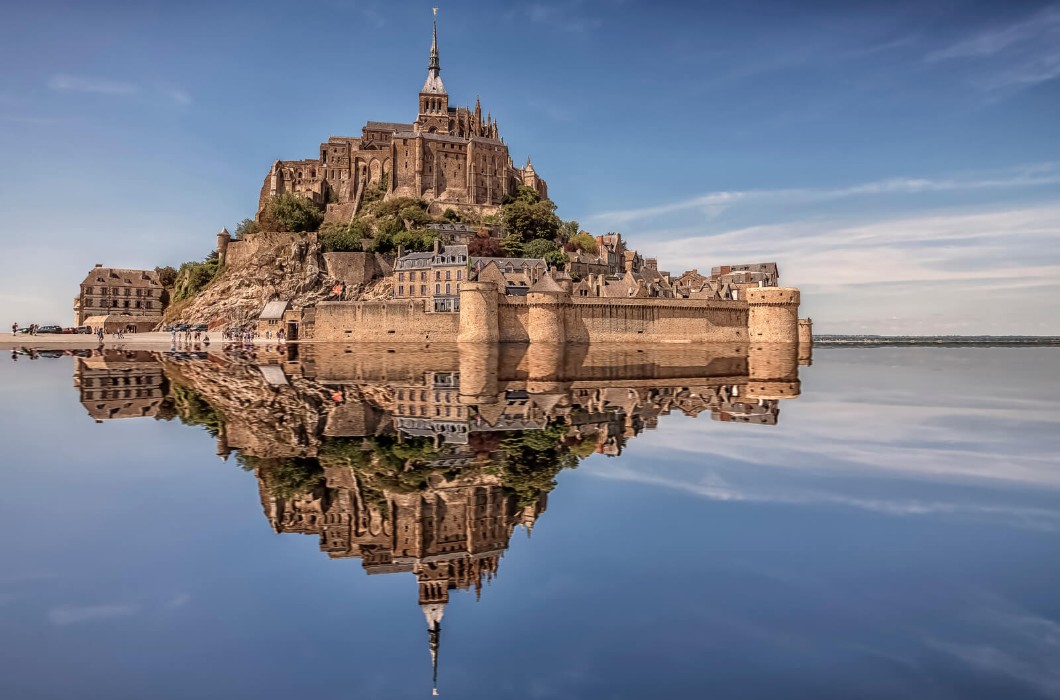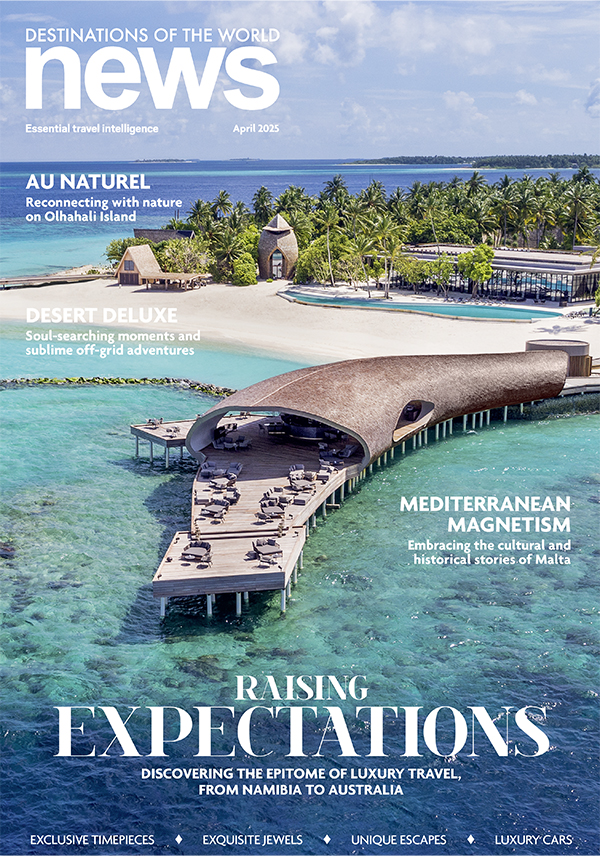As I recline on my deck chair, sip my cold champagne, and listen to the gentle waves of the Atlantic, I am forced to conclude that there is truly nothing better than summer in Normandy. While most French trips are filled with sensational food, wine and culture, few regions are as special as this green and quiet northern corner. The site of the World War II D-Day landings, the entire region is brimming with historical landmarks and cultural monuments. However, it also has a glamorous seaside scene that is all about enjoying the finer things in life.

Just a two-hour drive north from Paris, Normandy takes elegant French living to a whole new level. Far more peaceful than the French capital, and far less touristy than Cannes, Normandy has been a holiday hotspot for upper-class Europeans since the late 18th century. Home to prestigious film festivals and elite horse racing, its dramatic white-chalk cliffs, beautiful beaches, palatial hotels, and luxurious fashion and dining scene ensure the destination continues to outlive every passing travel trend.
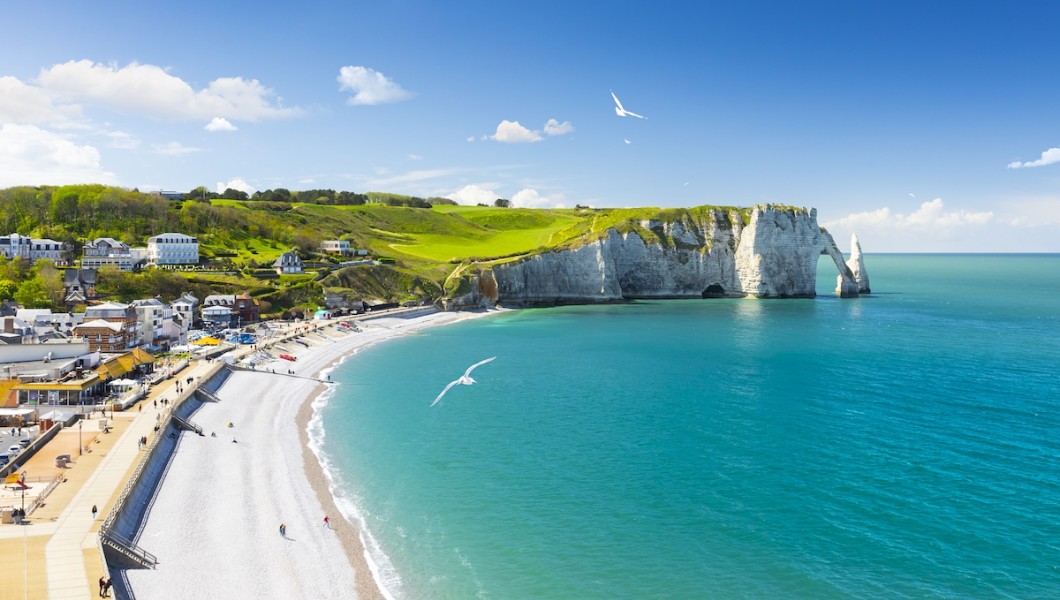
While you can still find classic French staples such as fresh croissants and fabulous café au lait, Normandy invites you to explore a different side to French dining. Oysters, cheeses, meats, and unique local products are championed by fine dining restaurants across the globe, providing a refreshing alternative to the stereotypical image of traditional French cuisine.
FAIRYTALE GLAMOUR
Travelling with my partner, we began our sophisticated road trip in the upmarket resort of Deauville. It was an extraordinary place like nowhere I had ever been before. Although I was expecting it to be pretty, its opulent villas and storybook half-timbered buildings absolutely blew me away. The embodiment of French luxury and style, every home, building, and flower-lined street was immaculate. Filled with romance and art, it was hard to believe that it was a functioning town where people lived and worked.
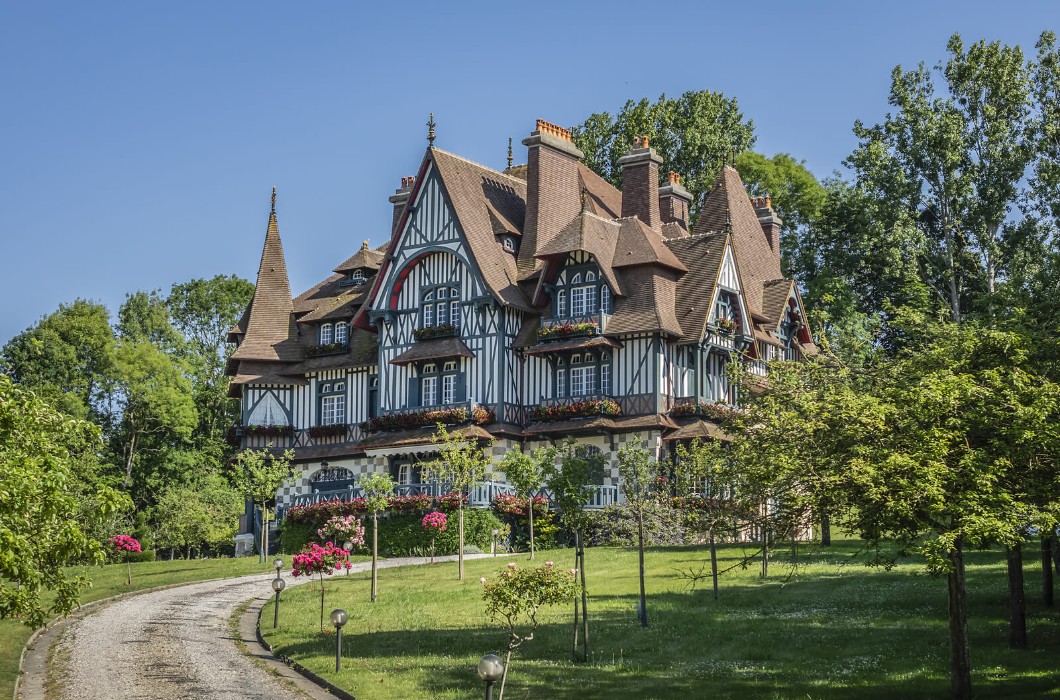
A product of the fairytale La Belle Époque period, (the beautiful era) of 1870 to 1914, its lavish manors and palaces look like they’ve been taken straight from a Walt Disney movie. We couldn’t walk more than a few metres without stopping to admire some form of awe-inspiring architecture. The Beaux-Arts style town hall is an essential photo stop, while the imposing Villa Strassburger can be toured or hired out upon request. Adorned with turrets, terraces, and vibrant flowers, even admiring it through the gates left us astounded.
WORLD-CLASS FASHION & FESTIVALS
Boasting the best fashion scene outside of Paris, Coco Chanel opened her second boutique in Deauville in 1913. Since then, all of the world’s most luxurious brands have followed suit, including Louis Vuitton, Hermès, Cartier, and Dior, and
a glorious array of independent boutiques, too. Artisan bakeries, chocolatiers, and delis are also found in abundance, while golf is another extremely popular pastime.
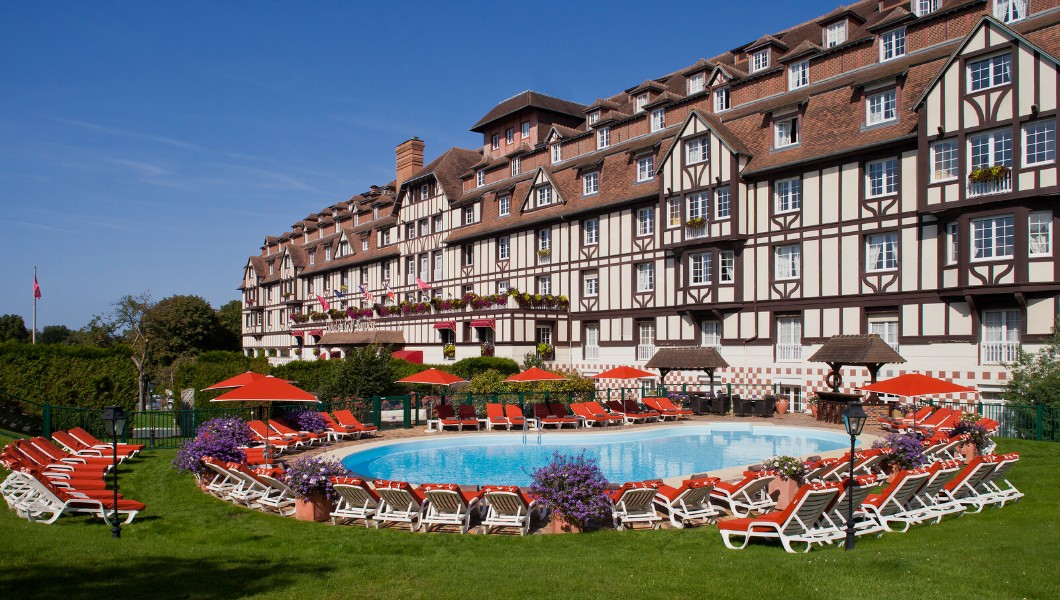
Built in 1929, Barrière Golf Deauville hosts the Lacoste Ladies Open de France, a prestigious tournament on the Ladies European Tour. Michael Douglas, George Clooney and Samuel L. Jackson are also regulars on the greens during festival season. In fact, there’s no better time or place for movie star spotting than Deauville in September. Host to the world-renowned American Film Festival, held here since 1975, don’t be surprised if you spot Pierce Brosnan enjoying moules-frites on the table next to you, or see Nicole Kidman meandering past the yacht-filled harbour.

We stayed right by the edge of the golf course, at the majestic L’Hotel du Golf. Owned by Barrière, the same brand behind Fouquet’s Abu Dhabi and Dubai. Everything about it was a lesson in understated French elegance. Positioned on a hill overlooking the town, and completed with a huge outdoor pool, the magnificent dining room offered spectacular views of the surrounding countryside.

The vast lobby was decorated with contemporary sculptures of horses and apples (the unofficial emblems of Deauville), and our room also included a complimentary glass of champagne at Casino Barrière Deauville. Found down by the harbour inside a grand waterfront palace, we loved the tuxedo-clad waiters and James Bond-like aura. Alongside its fashion, dining, and golf, Deauville is a dream destination for equestrian enthusiasts. August sees the world’s top gallopers descend on the town for the Meeting de Deauville Barrière, while show jumping, polo tournaments and horse sales are held throughout the year.
HOLLYWOOD ICONS
The beach is the undisputed highlight of this postcard-perfect settlement. A far cry from
the tacky promenades of many seaside towns, Deauville’s Art Deco-style beach huts and
mosaic-covered Roman baths are some of Normandy’s most famous landmarks.
Each hut is dedicated to a different Hollywood star, and the 600-metre boardwalk – Les Planches – felt like Normandy’s ultimate ‘place to be seen’.
Stopping for a drink in one of the stylish retro beach bars is a must. The sun-kissed terraces allow you to gaze out at the bright, multicoloured carousels, and maybe even spot horse riders taking advantage of the low tide. If you’re craving
some excitement, you can also try your hand at harness racing.
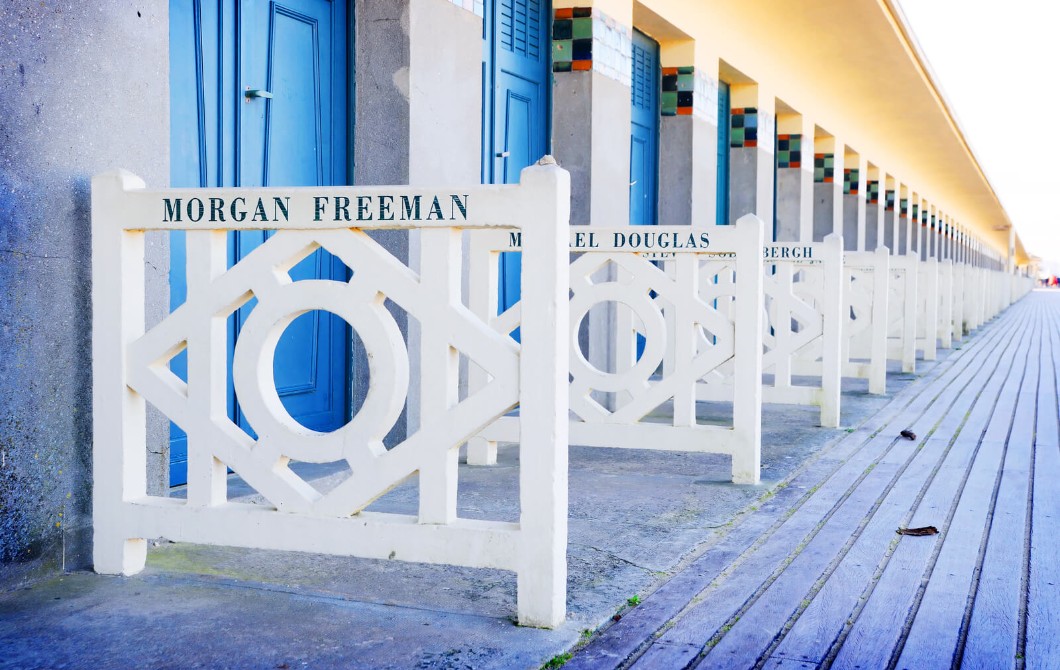
EXCEPTIONAL PRODUCE
Officially France’s number one region for apples, the fruit has been grown in Normandy since the 8th century. Today, the region’s apple orchards produce more than 800 varieties, and many of
its centuries-old, family-run cider and Calvados (apple spirit) distilleries offer tours and tasting experiences. For a deeper insight, there’s also a 40 kilometre ‘cider route’ drive that takes visitors past 15 apple farms, and an endless stream of large manors, crumbling castles and idyllic villages.
Local cold cuts, sausages, and cheese made up most of our diet, and we discovered that even the most down-to-earth establishments offered fabulous sharing platters.
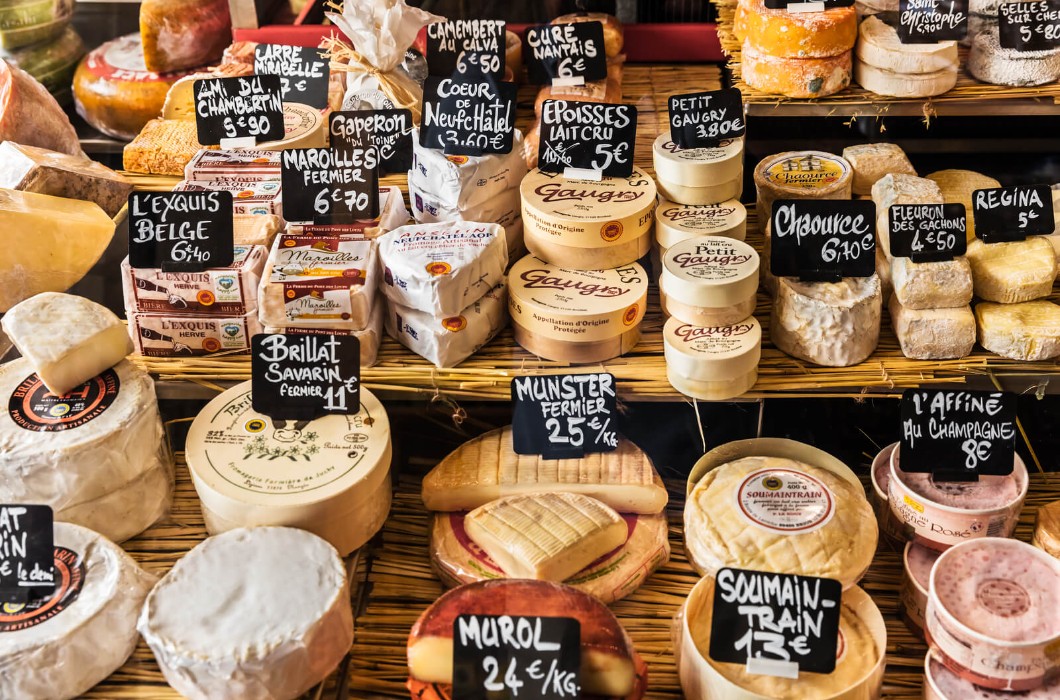
Alongside its abundance of fine dining restaurants, we were surprised to find that Deauville also has a lively nightlife scene, and we spent our first night at a moody and characterful bar by the main market square. Packed with hip young locals, we managed to grab the last available bar table. The party was still going when we left at one o’clock in the morning. If you have a weakness for soft and strong French cheese, you’ll be excited to know that Camembert is not just a delicious delicacy, but also a real place. An hour’s drive from Deauville, the quintessentially charming French settlement of half-timbered farms and grazing cattle still completely revolves around cheese production. Steeped in history, legend has it that the villagers provided French soldiers with Camembert during World War I. Hailed as providing a vital boost to morale, the iconic cheese has since been viewed as a national symbol of resistance. We also enjoyed delectable Normandy cheeses mixed into salads, baked into pies, and roasted with a side of freshly baked crispy baguette. It wasn’t unusual for it to be part of breakfast, lunch and dinner.
DEVINE SEAFOOD
From Deauville, we headed east to the tiny commune of Port-en-Bessin-Huppain. Located in the centre of Normandy’s legendary oyster producing region of ‘the Bessen’ – there’s no better place to sample the region’s unbelievably fresh seafood than this quaint and charming harbour.
Nestled between towering cliffs and littered with bustling seafood restaurants and tiny fishing boats, 10,000 tonnes of fish are sold at auction here every year. We spent a happy couple of days gorging on cauldrons of local mussels and indulging in all the oysters and champagne we could manage. We also learnt that Normandy is France’s leading region for scallop fishing, and that local recipe Coquilles Saint Jacques – a mix of scallops, butter, shallots, and mushrooms – is one of the best dishes in existence.

For a further seafood fix, you can take a tour of the enormous Baie des Vey oyster farms, where thousands of premium oysters are produced every year. To take respite from eating, we took many brisk walks along the clifftop paths, and pulled ourselves out for invigorating morning jogs over the old sea wall. Normandy is also ideal for bike touring. With over 500 kilometres of bike paths, groups of cyclists with loaded panniers were a common sight throughout our trip. The inland medieval town of Bayeux is another Instagrammable paradise within easy reach from Port-en-Bessin-Huppain, while Omaha Beach is just a 15-minute drive away.
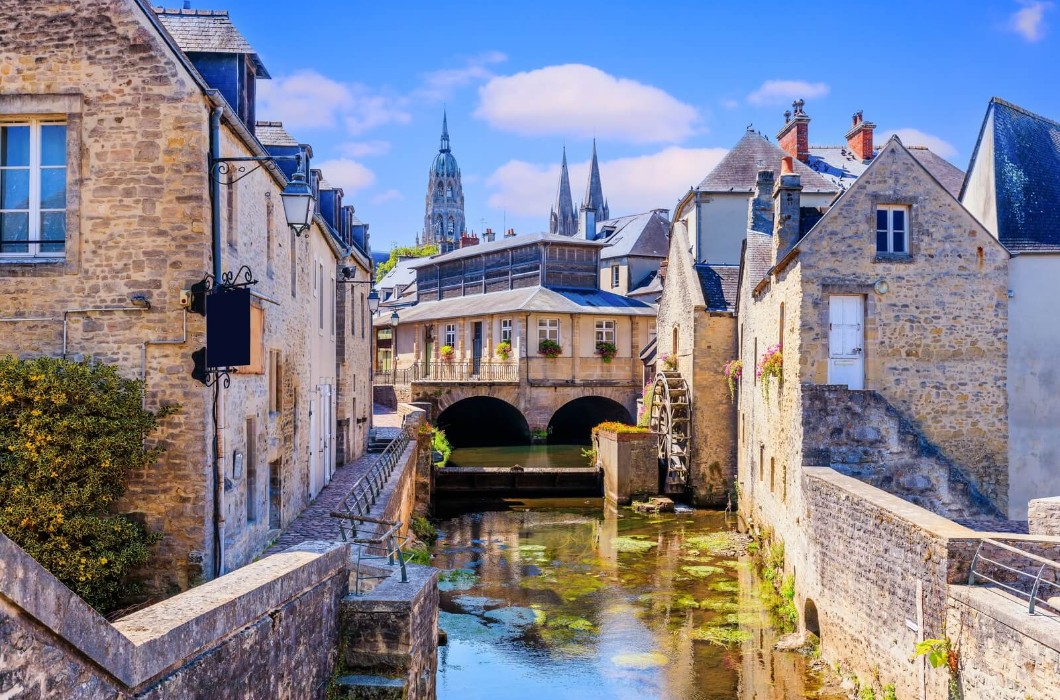
BEAUTIFUL TRIBUTES
The worst hit of all the D-Day sites, where over 4,000 allied soldiers lost their lives attempting to liberate German-occupied France, Omaha’s long stretch of golden sand is a moving and eerie place.
Billboards tell the story of the tragedies that took place on June 6, 1944, while a striking statue – Les Braves – has been erected on the beach in tribute to the fallen soldiers. Many more important war memorials, museums and distressingly huge cemeteries are scattered across the region.
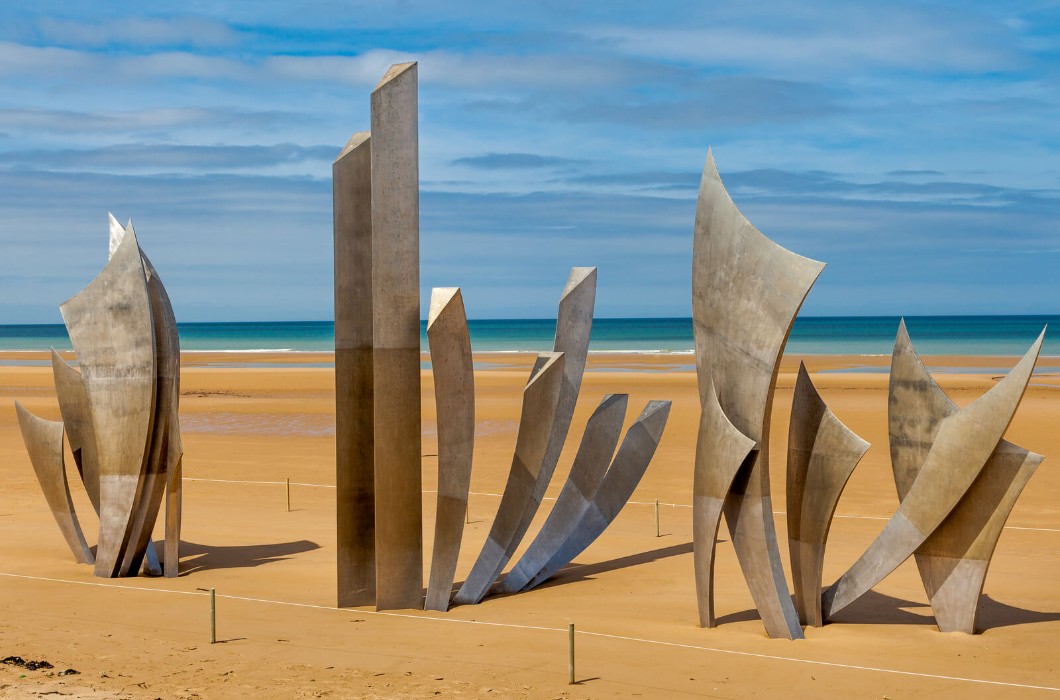
Our last stop was the floating gothic abbey of Mont Saint-Michel. Set out on an island, the UNESCO World Heritage site is one of the country’s top attractions. Joined to the mainland by a narrow road, cars are not allowed to drive onto the island and visitors must park over a mile away. Unless it’s pouring with rain, I highly recommend walking to the entrance, rather than catching the free shuttle bus. For us, the walk across the sand was a key part of the experience. Just as impressive from a distance as it is up close, we relished the views of the surreal vertical settlement as we approached. Come with a fully charged phone. You’ll want to take countless photos. Completed in the Middle Ages, the abbey attracts thousands of pilgrims each year. You can pay to look inside, or simply enjoy getting lost in the winding alleyways of tasteful shops, hotels and museums.
TIMELESS ELEGANCE
A haven for foodies, history lovers, and fashionistas, Normandy offers a bit of everything. While modern travel has opened up other destinations to Europe’s elite, it still maintains an irresistible allure. Normandy is a timeless destination that will never, ever, go out of style.
